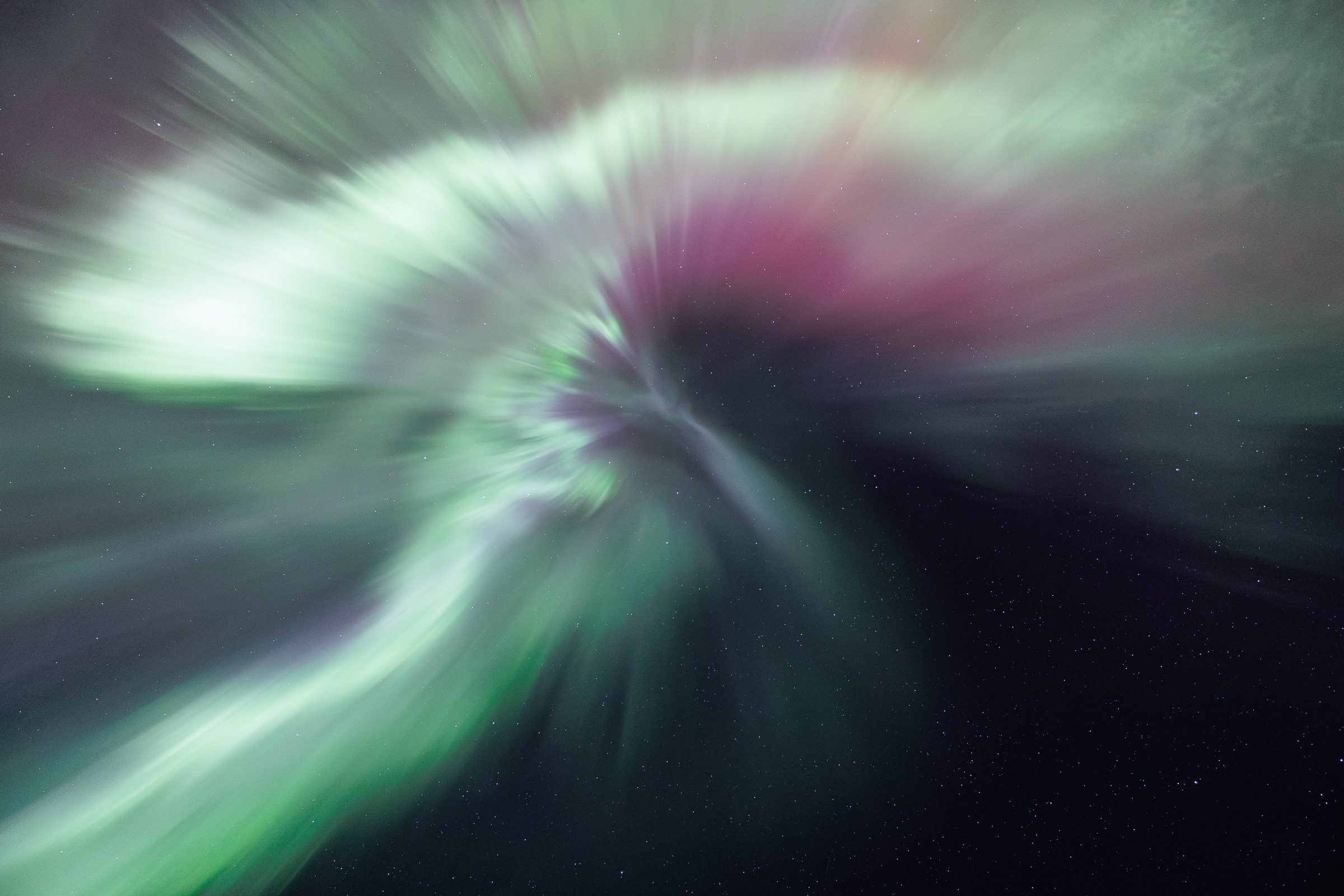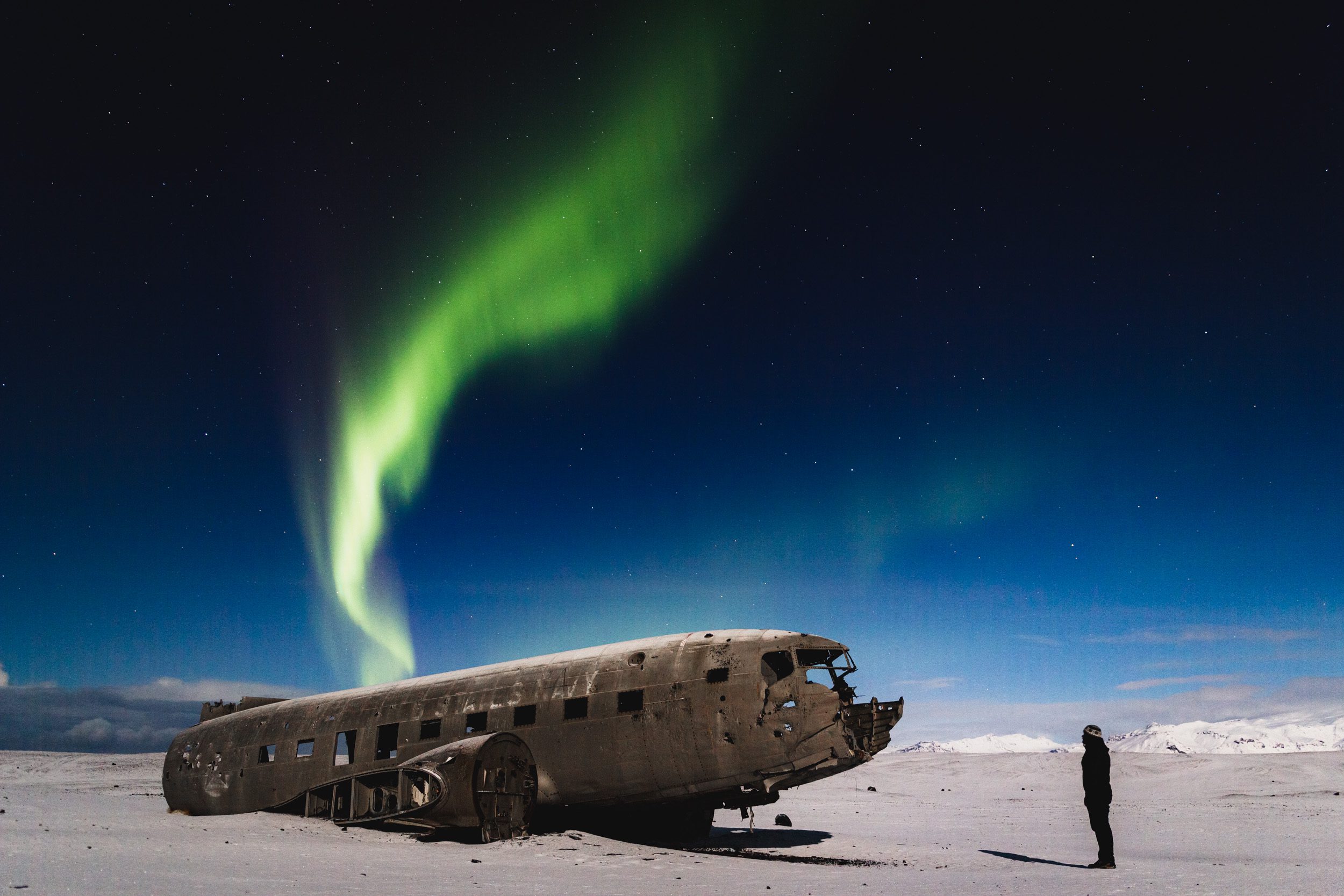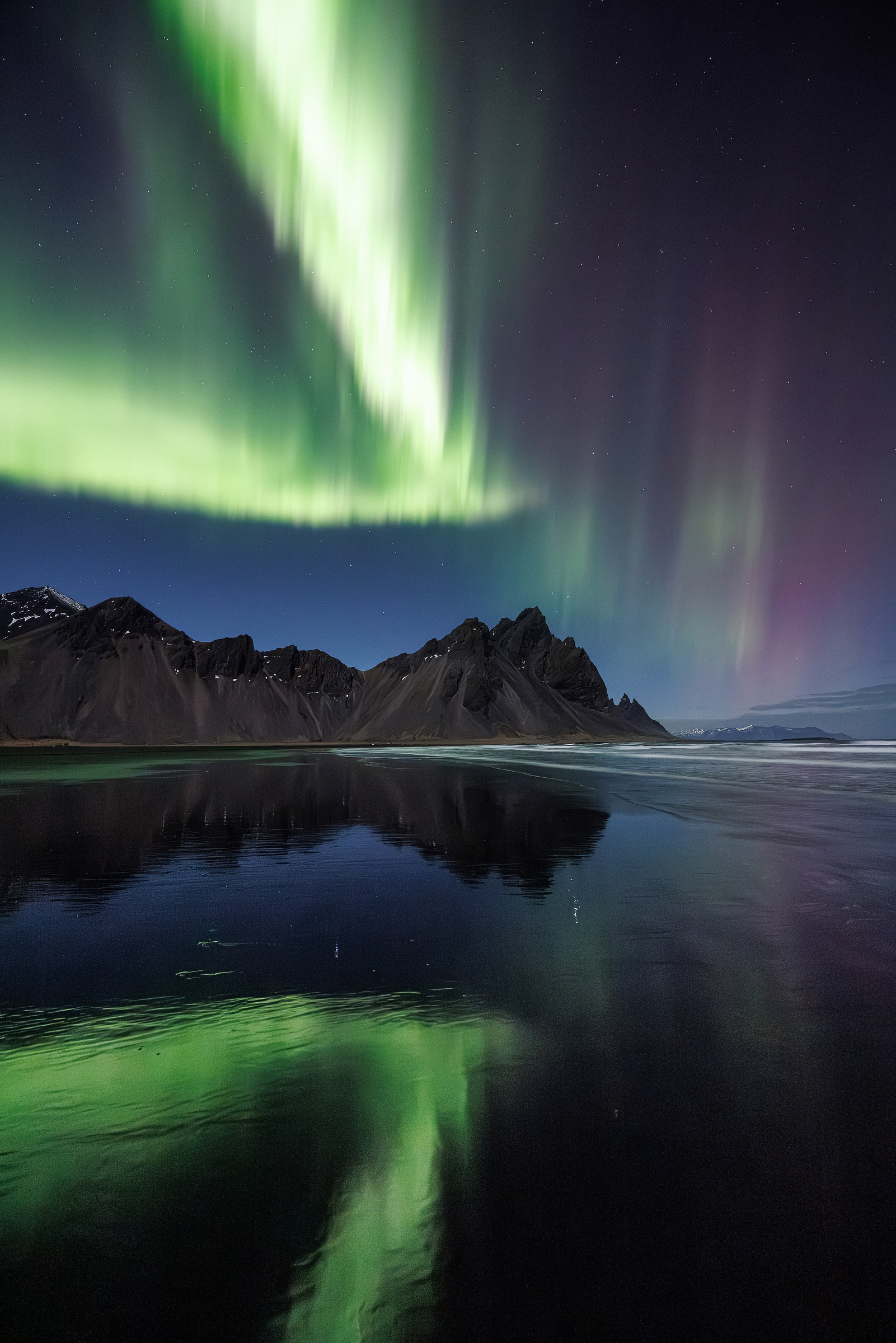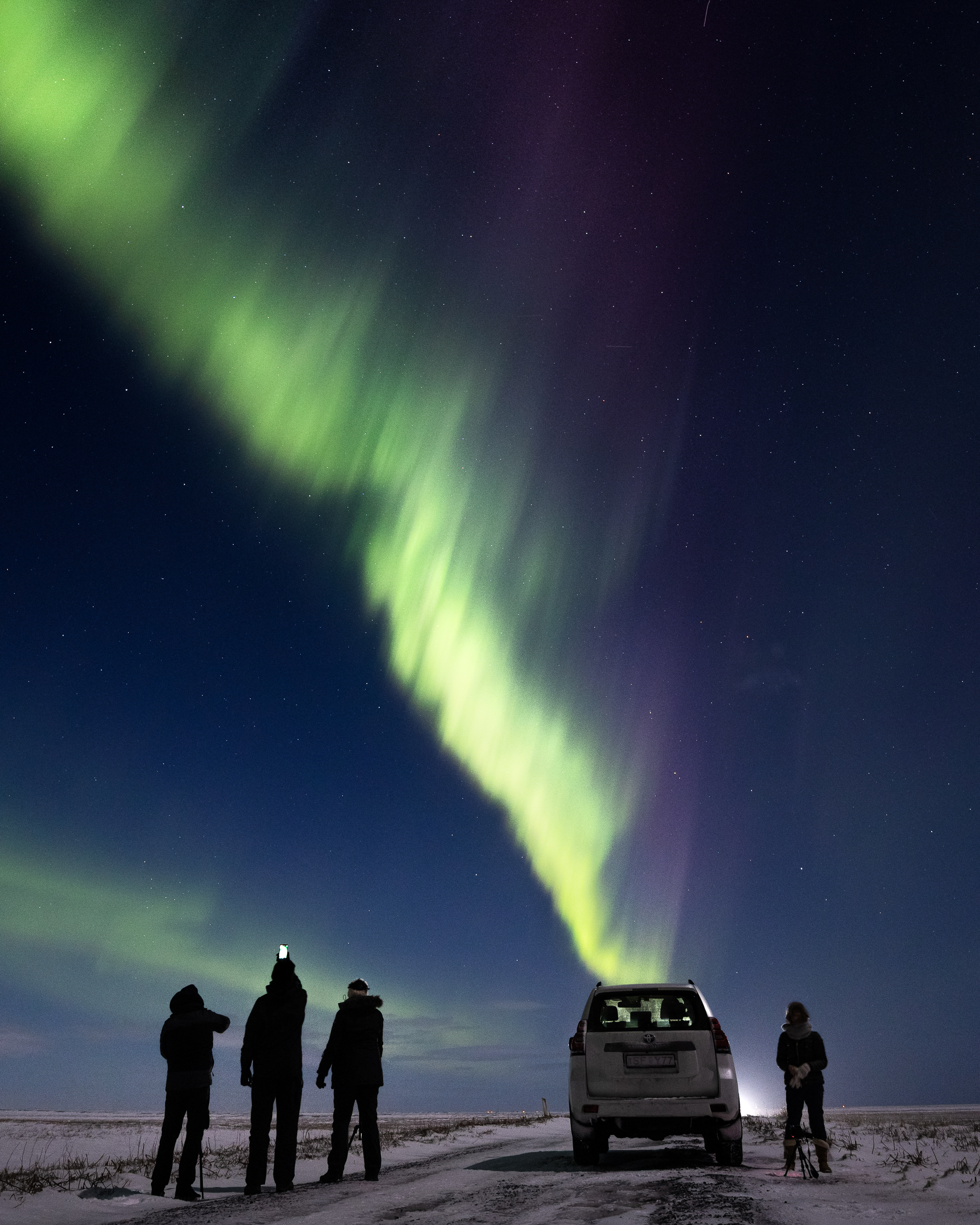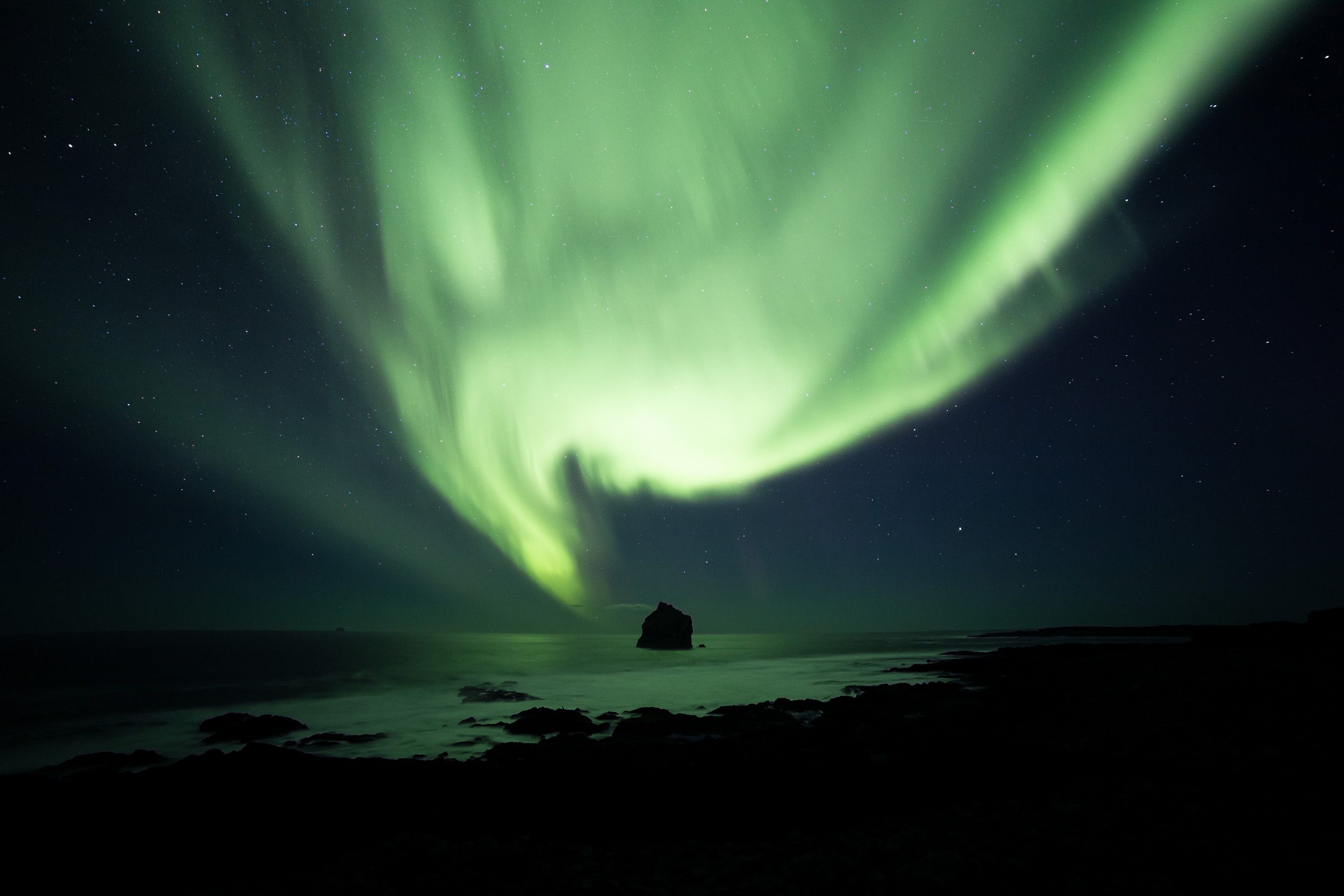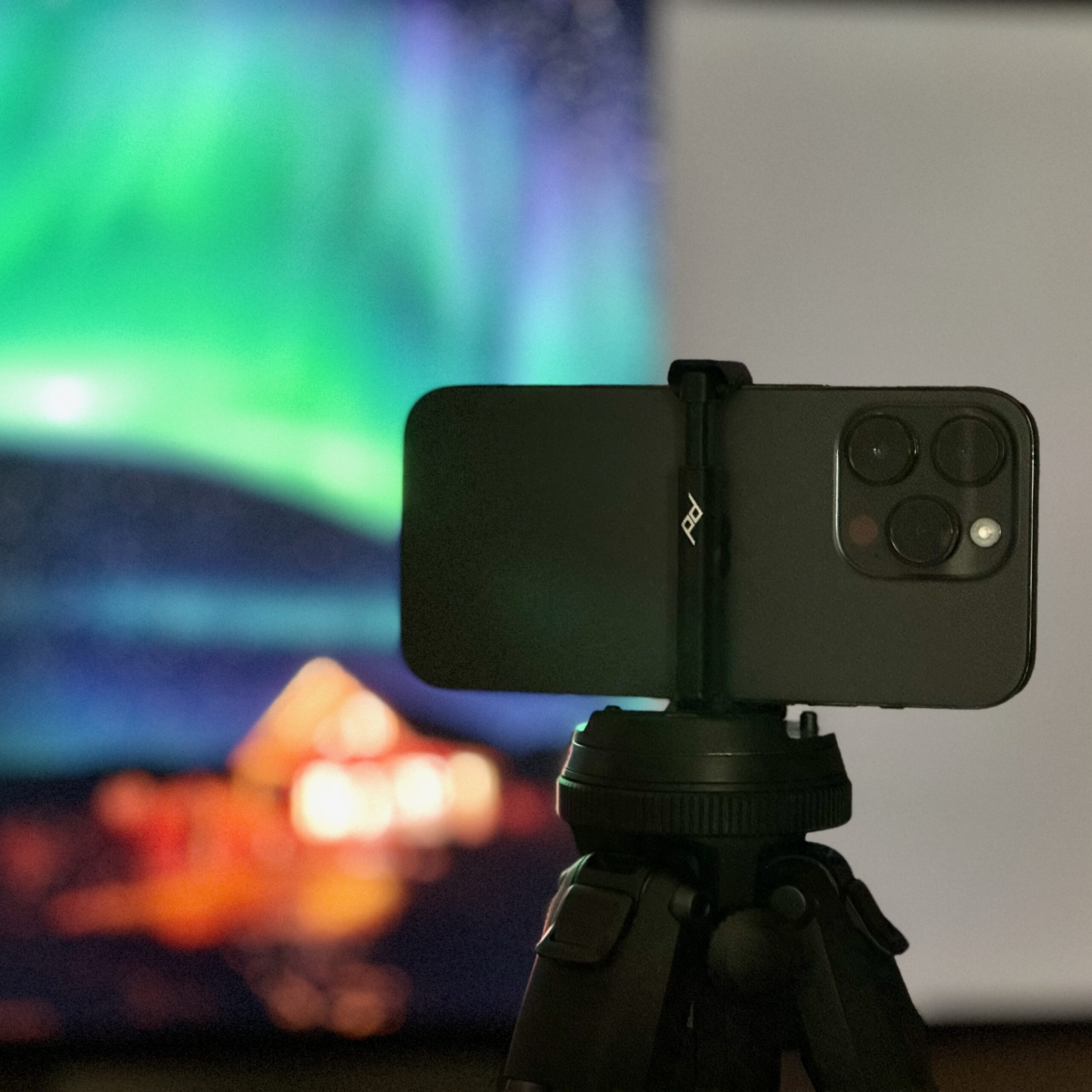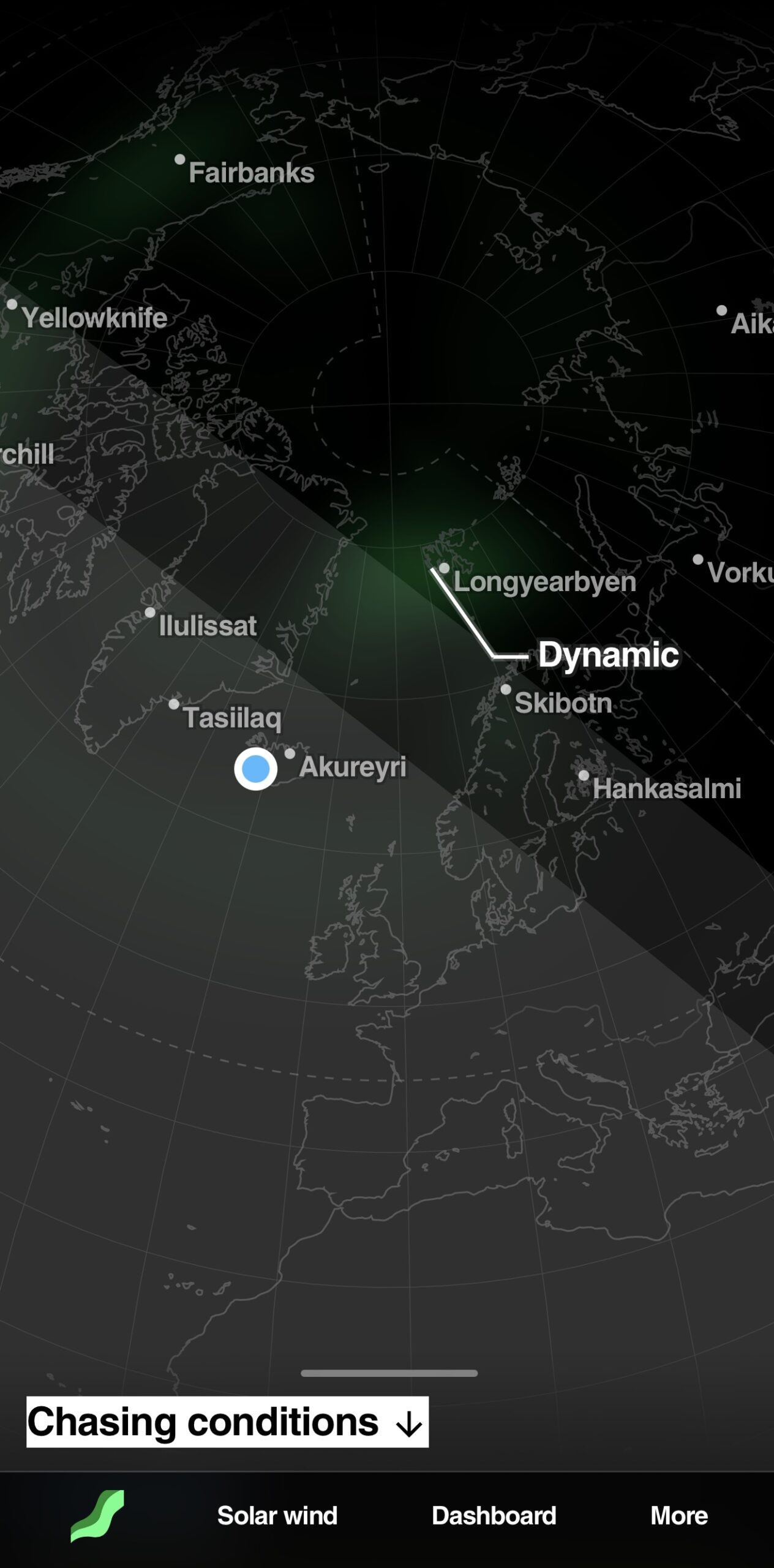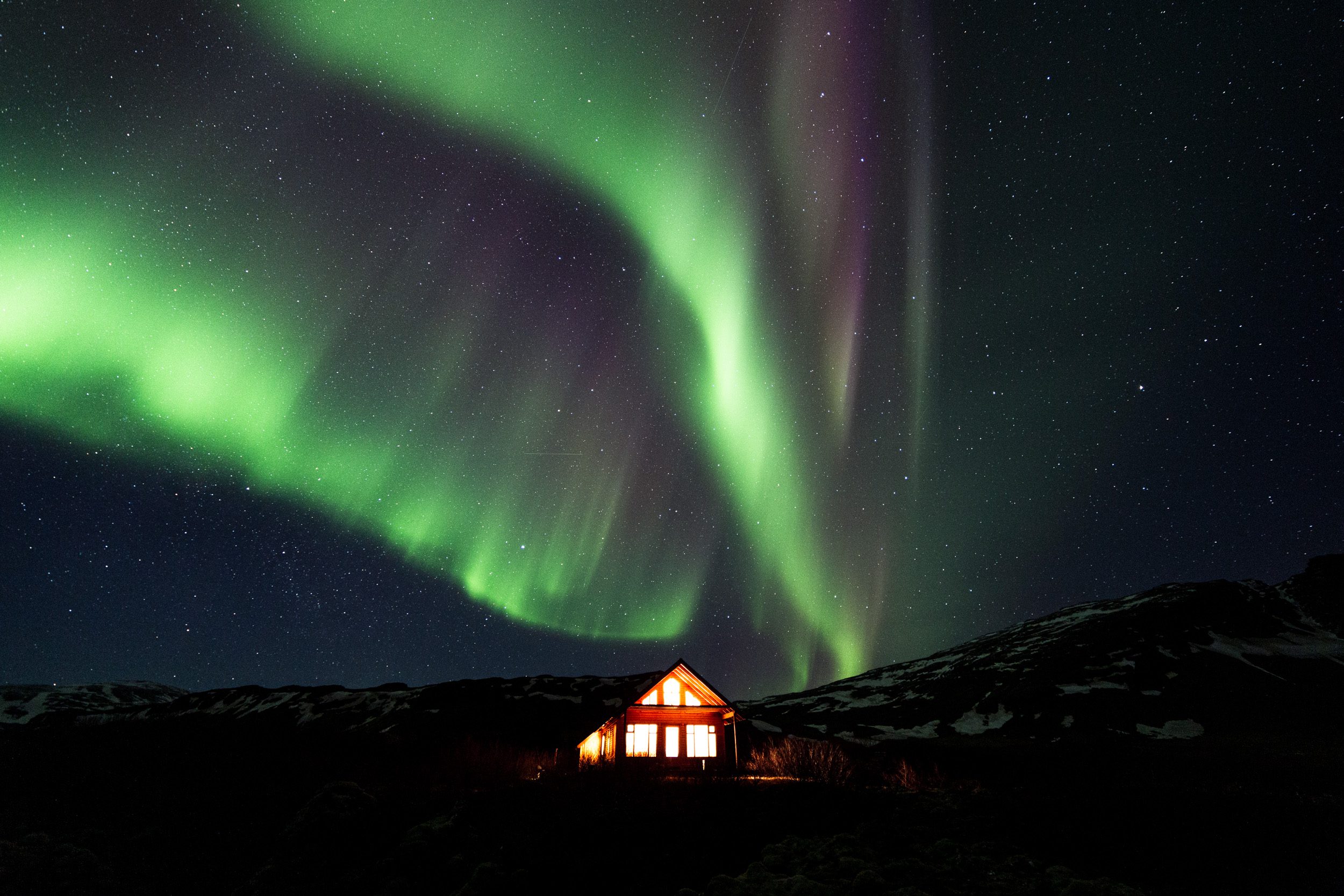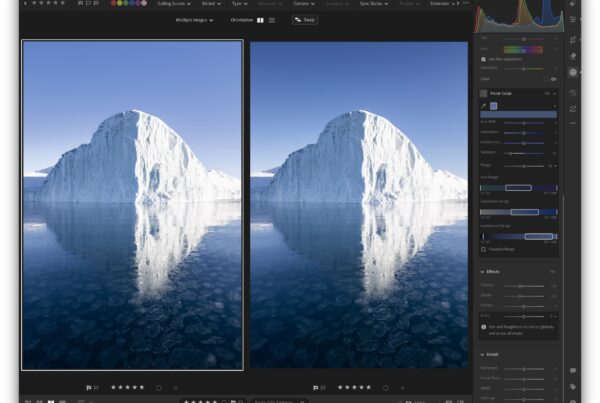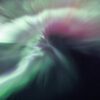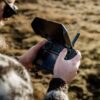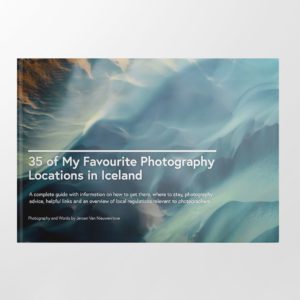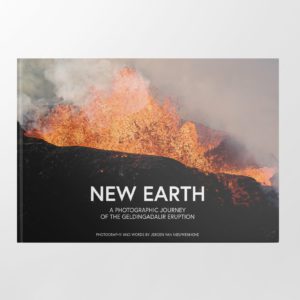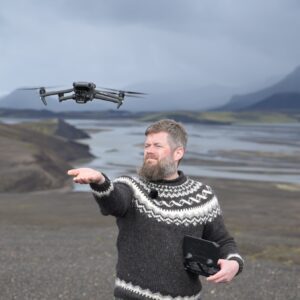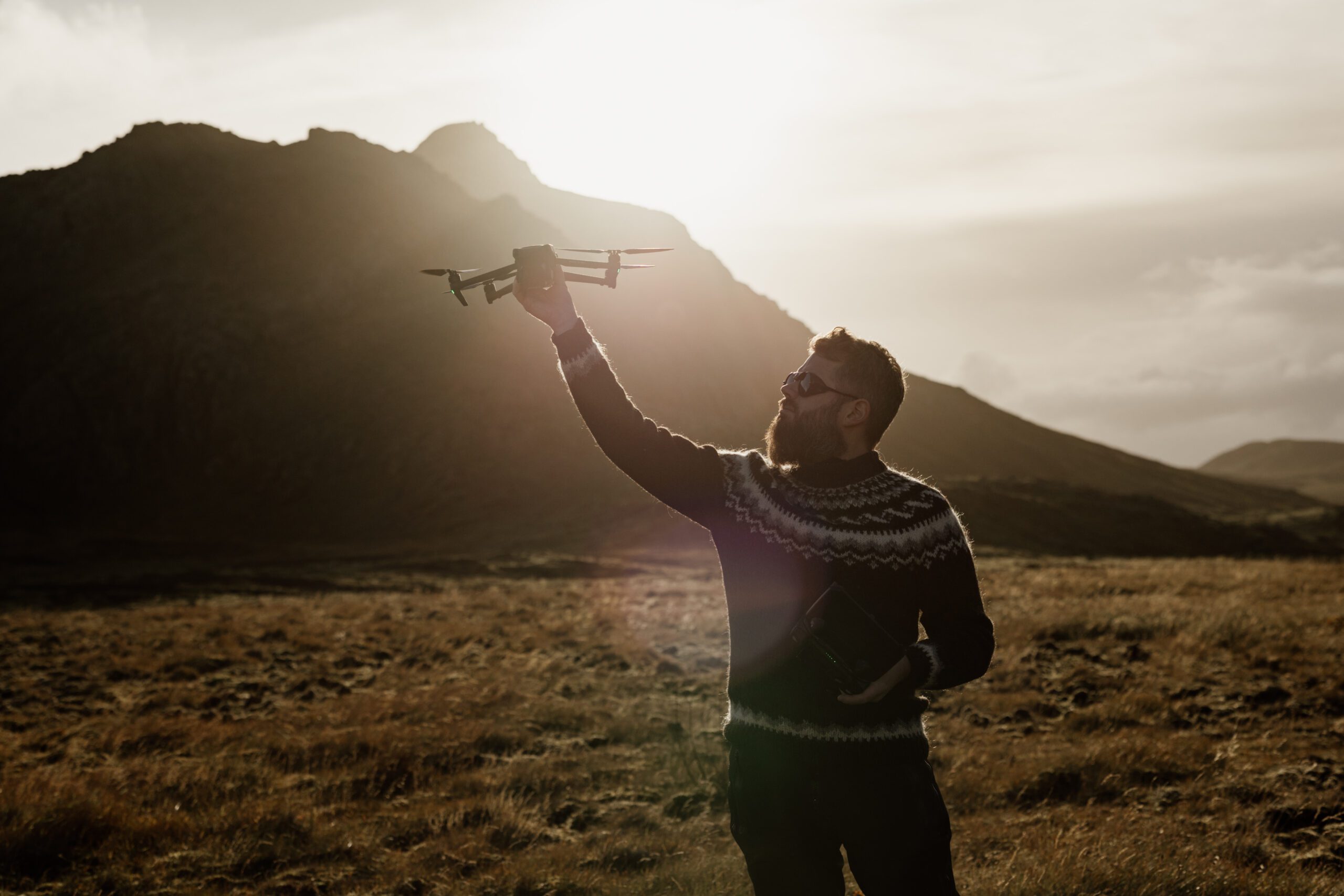There are few experiences that compare to standing under a night sky filled with ribbons of green and purple light. For photographers and nature lovers alike, witnessing the Northern Lights or their southern counterpart, the Aurora Australis, is an unforgettable life experience. But, despite their popularity, the aurora is surrounded by misinformation. From myths about the KP Index to confusion about when & where to see them, bad advice can lead to disappointment and even missed opportunities.
The science behind the Northern and Southern Lights is fascinating and complex, but you don’t need a physics degree to enjoy or photograph them. In this guide, I’ll focus on what actually matters: the essential facts, the conditions you need, and the tools that will help you plan your aurora adventure and capture it beautifully with your camera or phone. Let’s get started.
I have been chasing and photographing the northern lights since 2013 and have learned a lot along the way. This image was taken on my first ever night seeing the northern lights in Iceland.
Understanding What Causes The Aurora To Appear
The Northern Lights (Aurora Borealis) and Southern Lights (Aurora Australis) are the same phenomenon seen from opposite hemispheres. Both occur when charged particles from the Sun collide with gases in Earth’s upper atmosphere, mostly oxygen and nitrogen, at around 100 kilometres above the surface. These collisions release energy as light, creating the glowing, shifting patterns we see near the poles. You may hear people speak about things such as Coronal Mass Ejections (CME’s) or solar & geomagnetic storms, which are ultimately all factors that play a role in whether or not the aurora will be active or not.
However, what matters most for aurora chasers is simple. Solar wind activity directed at the Earth drives the lights, and the right mix of darkness and clear skies allows you to see them. The outside temperature, time of year, and even the KP Index play a much smaller role than most people think. Some of these, such as the atmospheric temperature, are even entirely unrelated.
Why The KP Index Won’t Tell You When You’ll See The Aurora
The KP Index is one of the most misunderstood numbers in aurora chasing. Many people treat it as a forecast that predicts when and where the Northern or Southern Lights will appear, but that is not what it was designed to do.
The KP Index was created in the 1940s to measure global geomagnetic activity, helping scientists understand how Earth’s magnetic field responds to the solar wind. It is calculated every three hours from magnetometer data collected around the world. Each station records how much its local magnetic field deviates from normal, and these readings are averaged into a single number between 0 (quiet) and 9 (strong geomagnetic storm).
For scientists, the KP Index is a valuable tool. It is used to monitor space weather and forecast geomagnetic storms that can disrupt satellites, radio communications, and power grids. However, for aurora chasers, it is a poor forecasting metric for several reasons:
- It is a global average. KP shows how Earth’s magnetic field behaved across the entire planet, not what is happening in your location right now.
- It is delayed. Because it is updated every three hours, the value you see usually reflects activity that has already happened.
- It smooths out local variation. Real auroral activity changes minute by minute and varies across regions. Averaging hides the short-term spikes that create visible displays.
- It ignores local conditions. Factors such as solar wind density and speed, the direction of the interplanetary magnetic field (IMF Bz), and of course cloud cover are far more important for visibility.
The KP Index still has scientific value, but it was never meant to tell you whether the aurora will be visible tonight. It is a retrospective, planet-wide summary, not a local real-time forecast.
If you are under clear, dark skies within the auroral zone, you can witness spectacular displays even with a low KP reading. The most important takeaway is that you should not rely on that single number to decide whether to go outside.
What The Aurora “Really” Looks Like
I often see people on social media who claim the aurora is a lie and even calling it a scam. They will claim that the lights never look as vibrant or active as you see in many photographs. And, in a sense, that may be true but the reality is more nuanced.
Many people expect the aurora to look exactly like it does in photographs and I can wholeheartedly say that it can but definitely not always. In fact, most of the time it does not look like you see in the photos. While bright aurora can show vivid greens and purples to the naked eye, most displays appear softer and less colorful. Why is that?
The difference between photographs and what you see comes down to how our eyes & cameras gather light. A camera can collect light for several seconds through the means of a long exposure, while our eyes are not capable of doing that. But, that doesn’t mean your camera is exaggerating; it is simply more sensitive to light than our eyes. By collecting light over time, it reveals details that our eyes cannot detect in real time. This is why a camera shows bright, rich colours when we often only see pale green or greyish arcs. During very strong displays, the colours and movement become much more visible, but most nights your camera will always see more than you do.
Finally, often forgotten, not everyone sees as well in the dark, and that may also influence how you experience the aurora. If you have poor night vision, you will likely see the aurora more faint and with less vibrancy.
Cold Nights And The Aurora: What Is the Real Connection?
You might have heard that the colder it is, the stronger or more visible the aurora gets. That is a common misconception. The aurora occurs high above weather systems and is unaffected by surface temperatures.
However, I suspect there is an easy explanation for this misconception: clear nights are often colder. When the sky is clear & calm, heat from the ground escapes into the atmosphere which makes the temperatures go down. And, because the skies are clear, you are more likely to see (some) aurora. This makes cold nights & clear skies appear connected to seeing the aurora, when in fact it is the lack of clouds that matters. Cold weather does not cause aurora, but clear skies allow you to see it. Focus on the cloud forecast, not the temperature.
When And How Often Can You See The Aurora?
The aurora does not follow a strict schedule. It can appear at any time during darkness and on any day during the aurora season.
The hours around magnetic midnight (when the magnetic pole is exactly between the sun & your location), roughly between 10 PM and 2 AM, are statistically the most active. However, the aurora can appear much earlier or later. I have photographed incredible displays as early as 7 PM and as late as 4 AM.
In the Northern Hemisphere, the best time to see the aurora is from September to early April. Here in Iceland, I have seen the first display of northern lights as early as the middle of August and as late as the end of April. In the Southern Hemisphere, the Aurora Australis is most visible between March and September, especially in Tasmania, southern New Zealand, and Antarctica.
How You Can Photograph The Aurora – Even With Your Phone!
Photographing the aurora is one of the most rewarding experiences in photography. While using professional photography gear definitely helps in getting crisp & clean result, a good technique and preparation are far more important.
I have already written detailed instructions on how you can best photograph the aurora, both for camera and smartphone users.
- If you plan to photograph the aurora with a camera, read my detailed guide: How To Photograph The Northern Lights. It covers lens choices, focusing in the dark, and setting the right exposure for changing aurora intensity.
- Prefer using your iPhone or smartphone? Modern phones can deliver impressive results when used correctly. Read Photographing Northern Lights (Aurora Borealis) With An iPhone for advice on using the default Camera app, exposure settings, and stabilising your phone for sharp images.
Whether you are using a DSLR, mirrorless camera, or a phone, the basics remain the same. Use a wide aperture, keep the camera stable, and adjust your exposure based on the aurora’s speed and brightness.
You don’t need a big professional camera to photograph the Northern or Southern Lights. You can even use your iPhone.
The Best (And Worst) Apps For Tracking The Aurora
With so many aurora apps available, it is easy to get lost in numbers and charts. The best tools give you real-time, local data instead of just KP values. It is mind-blowing to me how the most popular app, Aurora Forecast, is also one of the worst.
Apps I Recommend:
-
Hello Aurora – A reliable, community-driven app that combines live aurora reports, cloud forecasts, and real-time alerts. It is especially useful in Iceland and northern Europe.
-
Norlys – This new web app uses a unique model that predicts and anticipates visible aurora on a much more localised scale than any other app I have seen. Additionally, it shows live solar wind data, magnetic readings, and aurora forecasts specific to your region.
Apps You Should Avoid:
-
Any app that only displays the KP Index, such as Aurora Forecast. Such apps oversimplify complex data and can give false impressions about visibility. As mentioned before, a low KP forecast does not mean no aurora, and a high KP does not guarantee a show.
Tip: Combine a good aurora app with a reliable cloud map for your area and space-weather data such as IMF Bz and solar-wind speed. This combination gives a much clearer picture of your chances!
Norlys uses a brand new model that shows you where the aurora is currently visible.
The Real Secret: Patience, Persistence, And Clear Skies
Whether you are chasing the Northern or Southern Lights, success depends on patience, preparation by reading the correct data, and a splash of luck. Even the best aurora forecasts cannot guarantee a display. The most dedicated aurora chasers check the skies regularly, drive away from city lights when clouds roll in, and wait when others give up. When the sky finally comes alive, all the effort and cold fade away. Seeing the aurora dance above you is always worth it.
Final Thoughts
The aurora, whether in the Northern or Southern skies, is unpredictable and endlessly captivating. Understanding the science, knowing which tools to trust, and setting realistic expectations is so important and it will help you enjoy it to the fullest.
Finally, if you want to learn about a few other key mistakes some aurora chasers & photographers make, be sure to check my blog detailing which mistakes to avoid when photographing the northern lights.
Discover Jeroen’s Photo Workshops in Iceland, Greenland & Beyond
Ready to take your photography to the next level? Join me, Jeroen Van Nieuwenhove, on unforgettable photo workshops in Iceland, Greenland, Antarctica and other exciting destinations. Whether your passion is wildlife photography, bird photography, landscape adventures, or mastering drone photography, each workshop is designed to give you hands-on guidance in some of the world’s most spectacular locations.
From puffins in the midnight sun to Arctic foxes in the wild, from glaciers and volcanoes to dramatic coastlines seen by drone – these journeys are more than workshops; they’re once-in-a-lifetime experiences. Group sizes are kept small, ensuring personal mentoring and plenty of shooting opportunities.
Looking for something specific? Check out Jeroen’s…
- Wildlife & Bird Photography Workshops (Puffins, Arctic Foxes)
- Drone Photography Workshops
- Photo Workshops in Iceland
- Photo Workshops in Greenland
Spots are limited – secure your place today!
What Previous Photo Workshop Participants Said…
These reviews are verifiable on Jeroen’s public Google Business profile.
Support Jeroen’s Work
As an independent photographer, Jeroen partially relies on your support to keep producing worthwhile content such as blogs, photographs, books and much more. If you want to support his work, it is possible to do so by buying his e-books & books, prints or calendars.
You can also sign up to the newsletter to stay up to date on new blog posts, projects, workshops and other interesting information.
Thank you for considering!

